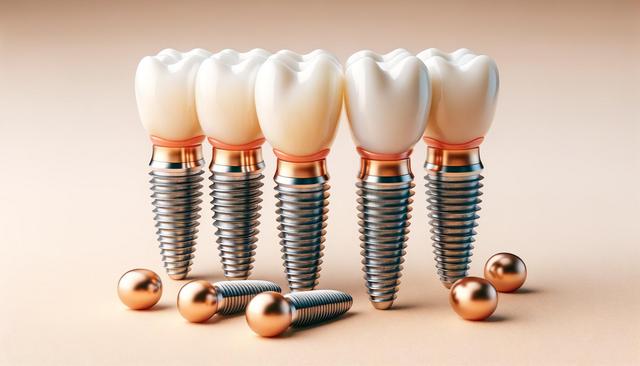Understanding What Dental Implants Are
Dental implants are a restorative dental solution used to replace missing teeth. They consist of a titanium post that is surgically embedded into the jawbone, acting as a substitute for the tooth root. Once the implant integrates with the bone, a crown is attached on top to mimic the appearance and function of a natural tooth. This combination of structure and design results in a long-lasting and visually appealing replacement. Dental implants are widely used for single tooth replacements, bridges, or even full arch restorations, making them a versatile option in modern dentistry.
The materials used in dental implants, such as titanium or zirconia, contribute to their durability. Titanium is the most commonly used due to its strength and biocompatibility, while zirconia offers a metal-free alternative with a tooth-colored appearance. Patients often choose dental implants because they feel and function like real teeth, and they help preserve jawbone health, preventing the bone deterioration that can occur after tooth loss.
Factors That Influence Dental Implant Pricing
The cost of dental implants can vary widely depending on several elements, including the location of the clinic, the expertise of the dental professionals, and the materials chosen. In 2025, dental implant pricing reflects both technological advancements and the economic landscape of local regions. Understanding these variables can help patients make informed decisions when budgeting for treatment.
Key cost factors include:
- Pre-surgical diagnostics (e.g., X-rays, CT scans)
- Surgical procedure and implant placement
- Abutment and crown materials
- Clinic location and overhead expenses
- Experience and qualifications of the dental team
For example, urban areas with high living costs may have higher clinic fees, while suburban or smaller towns could offer more affordable options. Additionally, clinics with advanced equipment and highly trained professionals may charge more, but they often provide higher precision and better outcomes.
Affordable Dental Implant Options in Your Area
Affordable care does not necessarily mean compromising on quality. Many dental clinics now offer tiered pricing plans or flexible packages that allow patients to choose solutions that match their financial situations. In 2025, local options have expanded to include community dental programs, dental schools offering supervised care, and clinics with in-house financing or partnerships with healthcare lenders.
Ways to explore affordable implant solutions locally:
- Look for clinics offering complimentary consultations
- Ask about bundled pricing that includes exams, surgery, and restoration
- Check if dental schools in your area provide implant services at reduced rates
- Inquire about flexible payment plans or interest-free financing
These approaches make dental implants more accessible to individuals who might otherwise delay treatment due to cost concerns. Seeking care locally can also minimize travel expenses and enable easier follow-up appointments.
Balancing Quality and Cost with Modern Techniques
Modern implant dentistry continues to evolve, offering patients innovative treatment options that improve both affordability and outcomes. One such advancement is guided implant surgery, which uses digital imaging and software planning to enhance precision. This can reduce procedure time and improve healing outcomes, potentially lowering overall costs by minimizing complications or the need for revisions.
Additionally, some clinics have adopted digital workflows that reduce lab fees and turnaround times. 3D-printed surgical guides, same-day crowns, and streamlined treatment protocols all contribute to more efficient care delivery. These improvements not only save time but also may reduce the cost of services without compromising the quality of care.
Patients also benefit from the increased use of implant-supported dentures and mini implants, which provide more affordable alternatives to traditional full-arch replacements. These options use fewer implants and can often be completed in fewer visits, resulting in lower costs and faster results.
Planning for Long-Term Value
While the upfront cost of dental implants may appear higher than other tooth replacement options, their long-term benefits often justify the investment. Implants are designed to last many years and, with proper care, may never need replacement. This durability contrasts with other options, such as removable dentures or bridges, which may require periodic adjustments or replacements.
Key long-term benefits include:
- Improved oral health and jawbone preservation
- Enhanced chewing function and speech
- Natural appearance and self-confidence
- Lower maintenance needs over time
To plan effectively, patients should consider both the immediate costs and the potential savings over a lifetime. Maintenance routines—such as daily brushing, flossing, and regular dental checkups—play a crucial role in extending the life of implants. Choosing a provider who offers follow-up care and education can further support long-term success.
Conclusion: Finding the Right Balance for Your Needs
Dental implants are a reliable and natural-looking solution for missing teeth, and with evolving options in 2025, they are more accessible than ever. By understanding what affects pricing, exploring local and affordable providers, and considering innovations in treatment, patients can make confident decisions that suit both their health and financial goals. Whether you’re looking for a single tooth replacement or a full-arch restoration, today’s dental landscape offers a variety of solutions that combine quality care with practical affordability. Taking the time to research and consult with trusted professionals will help ensure that your investment in dental implants supports a healthier and more confident future.






